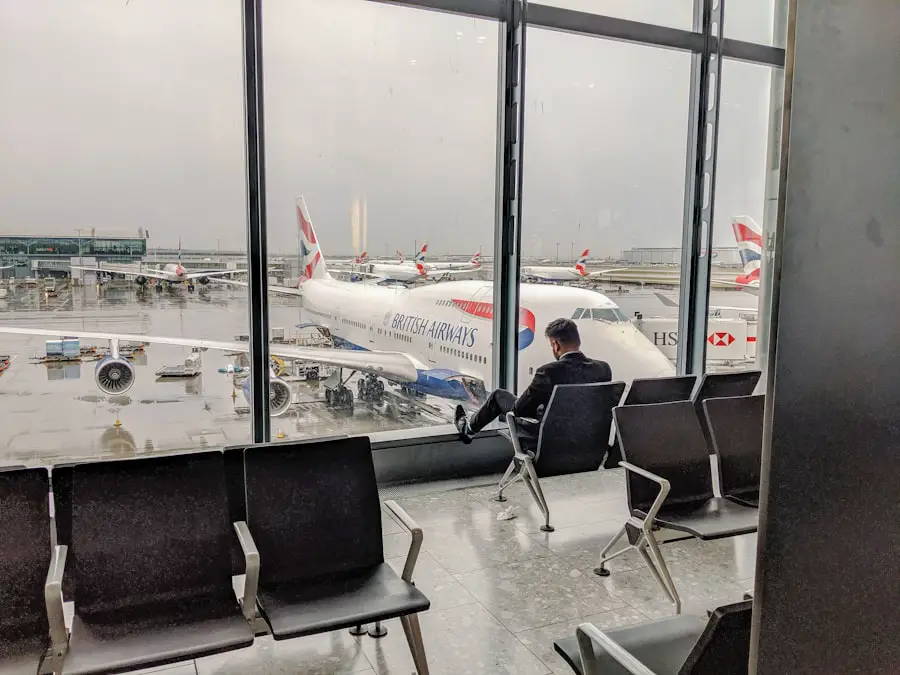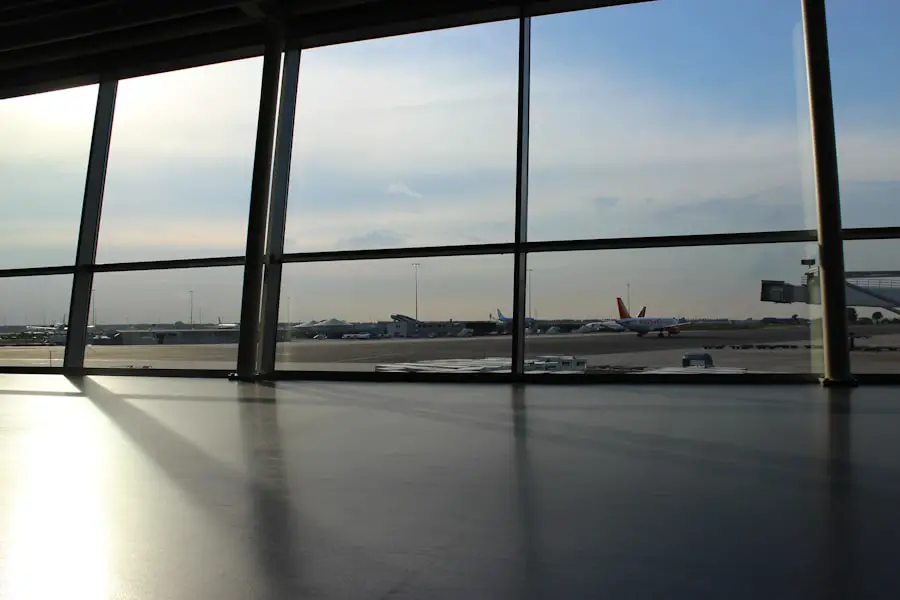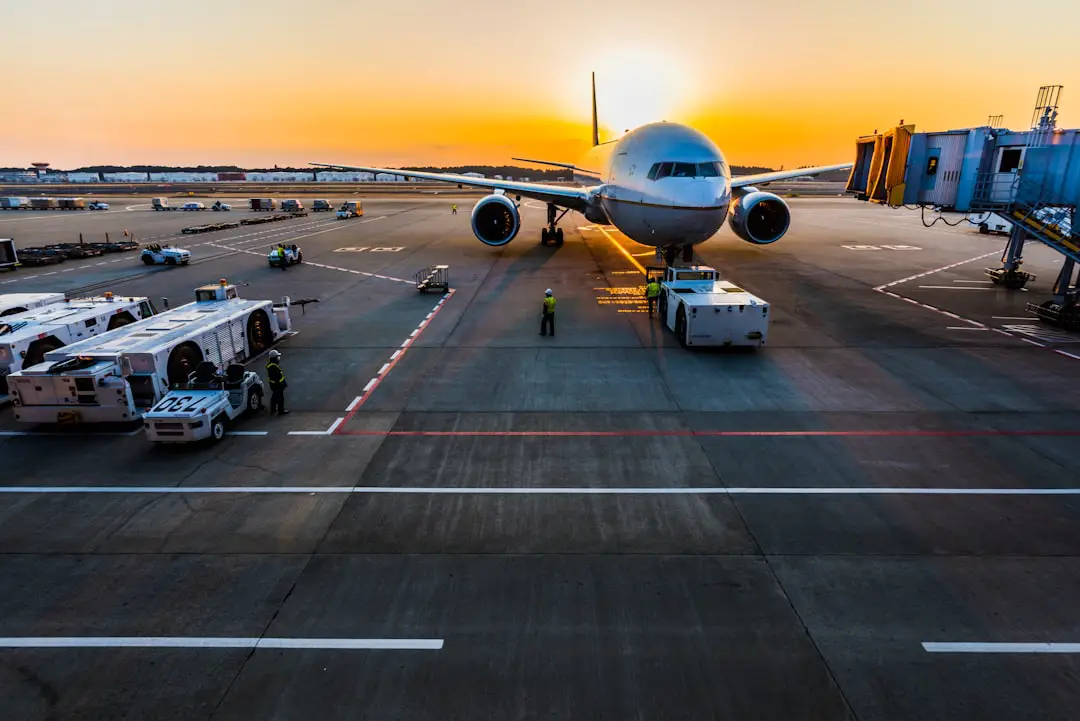Self transfer refers to the process where passengers are responsible for transferring their luggage and checking in for subsequent flights, particularly when traveling on separate tickets. This practice has gained traction in recent years, especially as travelers seek more flexibility and cost-effective options. With the rise of low-cost carriers and the increasing complexity of air travel itineraries, self transfer has emerged as a viable alternative for many passengers.
It allows travelers to piece together their journeys from various airlines, often resulting in significant savings compared to traditional round-trip tickets. However, this approach also requires a deeper understanding of the logistics involved, as passengers must navigate through different airports, manage their own baggage, and ensure they meet the necessary check-in and boarding times. The concept of self transfer is particularly relevant in an era where digital platforms and travel apps have made it easier for travelers to book multi-leg journeys across different airlines.
While this flexibility can enhance the travel experience, it also places a greater burden on passengers to be informed and proactive about their travel arrangements. As airlines adapt to this trend, they must consider how self transfer impacts their operations, customer service, and overall business model. The growing prevalence of self transfer raises important questions about the future of air travel and the evolving relationship between airlines and their customers.
Key Takeaways
- Self transfer allows passengers to connect between flights on different airlines without the need for assistance from the airlines or airport staff.
- Benefits of self transfer for airlines include increased passenger satisfaction, reduced operational costs, and the ability to attract more transfer passengers.
- Challenges of self transfer for airlines include potential for missed connections, lack of standardization across airports, and the need for advanced technology and coordination between airlines.
- Technology plays a crucial role in enabling self transfer, including self-service kiosks, mobile apps, and automated baggage transfer systems.
- Self transfer can lead to cost savings for airlines through reduced staffing needs and improved operational efficiency, ultimately impacting airline revenue and competition in the industry.
Benefits of Self Transfer for Airlines
Airlines can benefit significantly from self-transfer, which allows passengers to combine flights from different carriers. This flexibility can lead to increased passenger volumes, as travelers are no longer limited to the offerings of a single airline.
Attracting Budget-Conscious Travelers
By allowing self-transfer, airlines can attract budget-conscious travelers who are willing to piece together their itineraries for better pricing. This can be particularly advantageous for low-cost carriers that thrive on high passenger turnover and low fares.
Optimizing Flight Schedules
Self-transfer can help airlines optimize their flight schedules. By encouraging passengers to book separate tickets, airlines can fill seats on less popular routes that might otherwise go unsold. This strategy not only maximizes revenue potential but also enhances route viability.
Increasing Ancillary Revenue
Additionally, airlines can benefit from increased ancillary revenue through services such as baggage fees, priority boarding, and other add-ons that passengers may choose when booking separate flights. As a result, self-transfer can contribute positively to an airline’s bottom line while providing customers with more choices.
Challenges of Self Transfer for Airlines

Despite the potential benefits, self transfer also poses significant challenges for airlines. One of the primary concerns is the risk of missed connections. When passengers book separate tickets, they are responsible for ensuring they arrive at their next flight on time.
If a delay occurs on the first leg of their journey, the airline operating the second leg may not accommodate them, leading to customer dissatisfaction and potential reputational damage. This situation can create a complex web of liability issues, as airlines may find themselves caught between customer expectations and operational realities. Additionally, self transfer complicates the baggage handling process.
Passengers must retrieve their luggage after each flight and check it in again for subsequent legs. This not only adds time to the travel experience but also increases the likelihood of lost or mishandled baggage. Airlines must invest in clear communication and support systems to guide passengers through this process effectively.
Failure to do so can result in negative customer experiences that tarnish an airline’s reputation and deter future business.
Technology and Self Transfer
| Technology and Self Transfer Metrics | 2019 | 2020 | 2021 |
|---|---|---|---|
| Number of self-transfers using technology | 500 | 750 | 1000 |
| Percentage of self-transfers completed without assistance | 60% | 65% | 70% |
| Average time taken for self-transfer process | 10 minutes | 8 minutes | 6 minutes |
The role of technology in facilitating self transfer cannot be overstated. Digital platforms and mobile applications have revolutionized how travelers plan and manage their journeys. Many travel apps now allow users to book multi-leg itineraries across different airlines seamlessly, providing real-time updates on flight statuses and gate changes.
This technological advancement empowers passengers to take control of their travel plans while minimizing the stress associated with self transfer. Airlines are also leveraging technology to enhance the self transfer experience. For instance, some carriers have implemented self-service kiosks at airports that allow passengers to check in for their subsequent flights quickly.
These kiosks can streamline the process of printing boarding passes and checking luggage, reducing wait times and improving overall efficiency. Furthermore, advancements in tracking technology enable airlines to provide real-time updates on baggage status, giving passengers peace of mind as they navigate through multiple flights.
Customer Experience and Self Transfer
Customer experience is a critical factor in the success of self transfer initiatives.
To enhance customer satisfaction, airlines must prioritize clear communication regarding self transfer policies and procedures.
Providing detailed information about check-in times, baggage handling, and airport navigation can empower travelers to make informed decisions and reduce anxiety during their journeys. Moreover, airlines can improve customer experience by offering dedicated support for self-transfer passengers. This could include providing staff at key airports to assist with baggage handling or offering shuttle services between terminals for those navigating large airport complexes.
By investing in customer support initiatives tailored to self transfer travelers, airlines can foster loyalty and encourage repeat business from this growing segment of the market.
Cost Savings and Self Transfer

One of the most appealing aspects of self transfer for travelers is the potential for cost savings. By booking separate tickets with different airlines, passengers can often find lower fares than those offered by traditional carriers for similar routes. This price sensitivity is particularly pronounced among budget-conscious travelers who are willing to sacrifice convenience for savings.
Airlines that embrace self transfer can capitalize on this trend by offering competitive pricing structures that attract price-sensitive customers. From an operational perspective, self transfer can also lead to cost savings for airlines themselves. By allowing passengers to manage their own transfers, airlines can reduce staffing requirements at airports and streamline operations related to baggage handling and check-in processes.
This reduction in operational complexity can translate into lower overhead costs, enabling airlines to allocate resources more efficiently while maintaining competitive pricing.
Operational Efficiency and Self Transfer
Operational efficiency is a crucial consideration for airlines looking to implement self transfer policies effectively. By encouraging passengers to take responsibility for their transfers, airlines can optimize their resources and focus on core operations such as flight scheduling and maintenance. This shift allows airlines to allocate staff more strategically while minimizing delays associated with missed connections or baggage mishandling.
However, achieving operational efficiency in a self-transfer model requires careful planning and coordination among various stakeholders within the airline industry. Airlines must work closely with airport authorities, ground handling services, and other partners to ensure seamless transitions for passengers moving between flights. This collaboration is essential for creating a cohesive travel experience that minimizes disruptions while maximizing efficiency.
Impact on Airline Revenue
The impact of self transfer on airline revenue is multifaceted. On one hand, allowing passengers to book separate tickets can lead to increased passenger volumes and ancillary revenue opportunities through add-on services such as baggage fees or priority boarding options. This influx of revenue can be particularly beneficial for low-cost carriers that rely heavily on ancillary income streams.
On the other hand, airlines must also consider the potential revenue loss associated with missed connections or dissatisfied customers who may choose not to fly with them again due to negative experiences related to self transfer. Balancing these competing factors is essential for airlines looking to maximize revenue while maintaining customer satisfaction levels. Developing robust strategies that address both sides of this equation will be critical as the industry continues to evolve.
Competition and Self Transfer
The rise of self transfer has intensified competition among airlines as they vie for market share in an increasingly fragmented landscape. Low-cost carriers have been particularly adept at capitalizing on this trend by offering attractive pricing structures that appeal to budget-conscious travelers seeking flexibility in their itineraries. Traditional carriers must adapt by reevaluating their pricing strategies and service offerings to remain competitive in this new environment.
Furthermore, as more travelers become aware of self transfer options, airlines must differentiate themselves through superior customer service and innovative solutions that enhance the travel experience. This could involve investing in technology that simplifies the booking process or providing additional support services tailored specifically for self-transfer passengers. By focusing on these areas, airlines can position themselves favorably within a competitive marketplace while attracting a loyal customer base.
Future Trends in Self Transfer
Looking ahead, several trends are likely to shape the future of self transfer in the airline industry. One significant trend is the continued integration of technology into the travel experience. As artificial intelligence (AI) and machine learning become more prevalent in travel apps and booking platforms, passengers will benefit from personalized recommendations that streamline their itineraries based on preferences and past behaviors.
Additionally, sustainability concerns are likely to influence how airlines approach self transfer policies moving forward. As travelers become increasingly conscious of their environmental impact, airlines may explore ways to promote eco-friendly practices within the self-transfer model—such as encouraging shared transportation options between terminals or implementing carbon offset programs for multi-leg journeys.
The Future of Self Transfer in the Airline Industry
The future of self transfer in the airline industry appears promising as both travelers and airlines adapt to this evolving landscape. With its potential for cost savings, increased operational efficiency, and enhanced customer experiences, self transfer is likely to become an integral part of air travel strategies moving forward. As technology continues to advance and competition intensifies, airlines will need to embrace innovative solutions that cater to the needs of modern travelers while navigating the complexities associated with self transfer effectively.
Self transfer for airlines refers to the process of passengers transferring between flights without the assistance of airline staff. This can save time and provide more flexibility for travelers. In a related article on TakeTravelInfo, they discuss the best travel pillows for long flights this spring. Having a comfortable travel pillow can make self transfers between flights much more enjoyable and relaxing. Check out their list of the top 5 travel pillows to ensure you have a restful journey. Read more here.
FAQs
What is self transfer for airlines?
Self transfer for airlines refers to the process where passengers arriving at an airport on one airline and departing on another airline can transfer between flights without the assistance of airline staff. This allows passengers to book separate tickets on different airlines and still make a connection.
How does self transfer work for airlines?
Passengers who have booked separate tickets on different airlines can self transfer by collecting their luggage, going through immigration and customs (if applicable), and then checking in for their next flight with the second airline. It is important to leave enough time between flights to complete these steps.
What are the benefits of self transfer for airlines?
Self transfer allows passengers more flexibility in booking flights on different airlines, potentially saving money by finding the best deals for each leg of their journey. It also gives passengers more control over their travel plans and allows for customization of their itinerary.
What are the potential challenges of self transfer for airlines?
One of the main challenges of self transfer is the risk of missing the connecting flight if there are delays or issues with the first flight. Additionally, passengers may need to re-check their luggage and go through security again, which can be time-consuming.
Are all airports and airlines equipped for self transfer?
Not all airports and airlines are equipped for self transfer, so it is important for passengers to research and plan their itinerary carefully. Some airports may have dedicated transfer desks or facilities for self transfer, while others may not have this option available.
